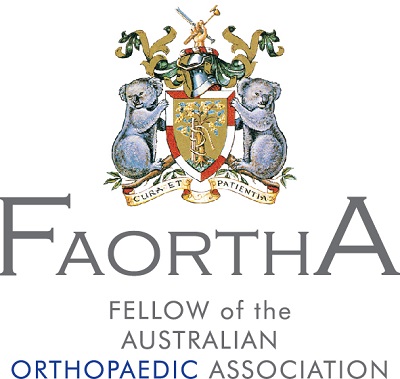Knee Arthroscopy
Knee arthroscopy is a minimally invasive surgical procedure that can be used for many knee conditions, for example reconstructing ruptured anterior cruciate ligaments and repairing meniscus tears.
Dr. Ben Kenny has been performing knee arthroscopy as an alternative to traditional knee surgery for a number of years. Treating a wide range of sports injuries and general trauma to the knee has exposed Dr. Kenny to a variety of complex scenarios and provided invaluable experience for continuous improvement of arthroscopic techniques. His patient-centered approach is reflected in the adoption and development of advanced techniques that aim to lessen the impact of surgery on a patient and improve patient outcomes.
Anterior Cruciate Ligament & Meniscus Cartilage
There are 4 main ligaments in the knee joint that hold the bones together and keep the knee stable. The anterior cruciate ligament (ACL) prevents the knee from buckling and giving way, providing rotational stability and protection from hyperextension of the knee (straightening beyond the normal range).
ACL injuries or tears most commonly occur during sports such as soccer, basketball and netball where sudden stops, changes of direction or twisting motion can happen.
The meniscus cartilage provides a cushion between the thighbone and shinbone. A torn meniscus can also occur in any of the above situations, usually during sporting activities. Without treatment, a significant meniscus tear can predispose the knee to develop osteoarthritis.
Symptoms of a torn ACL or meniscus tear include:
- Knee swelling
- Reduced motion
- Pain around the torn area
- Discomfort while walking
Diagnosis may involve:
- Medical history review
- Physical examination
- MRI
- X-ray
The procedure
Knee arthroscopy for ACL reconstruction and repair of a torn meniscus are among the most commonly performed arthroscopic surgical procedures. Knee arthroscopy often is performed under general anaesthetic.
An arthroscope (video camera and light) is inserted through a small incision in the knee. This enables a monitor view of the inside of the knee. One or two additional small incisions are also made to allow other surgical instruments to be inserted into the knee.
In situations where the ACL sustains a complete tear, a graft must be used to replace it. This is usually obtained from the patient’s own knee or donated tissue.
Sometimes when a meniscus tear is complex or severe, the majority of the meniscus must be removed. For smaller tears it is possible to suture the torn meniscus together using various arthroscopic techniques.
Post operative
Knee arthroscopy is often conducted as a day case procedure.
Pain can be managed with medicines. Dr. Kenny will advise if physiotherapy is required.
Prognosis
Surgery to repair a torn ACL is usually successful in relieving pain and helping patients to regain knee stability. However, the procedure may not always return full function of the knee, depending on the severity of the tear.
ACL repair can require an extended recovery period. You should usually be able to resume your regular physical activities, including contact sport, within 9-12 months after surgery.
Arthroscopic meniscus repair is successful in 70-90% of cases depending on the location and type of tear.
Where a partial meniscectomy (removal of portion of meniscus) has been necessary then patients should expect between 3 and 6 weeks recovery time. For meniscus repair generally, 12 to 16 weeks is sufficient for recovery.
There is evidence to suggest that patients who injure both their ACL and their meniscus, and who undergo treatment for both injuries at the same time, have more positive success rates.






